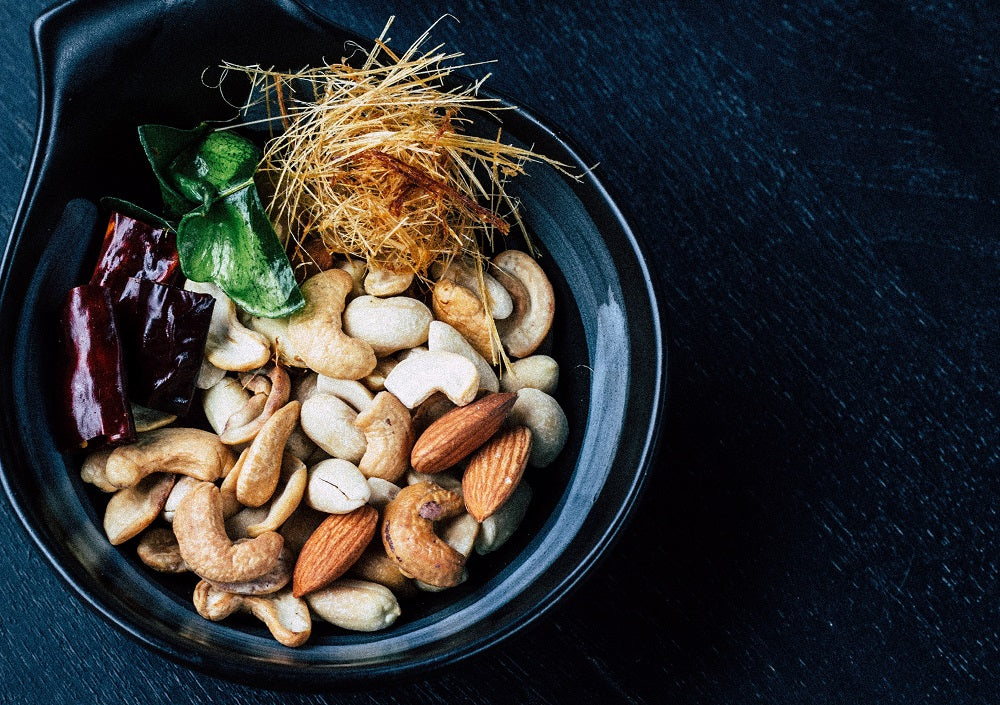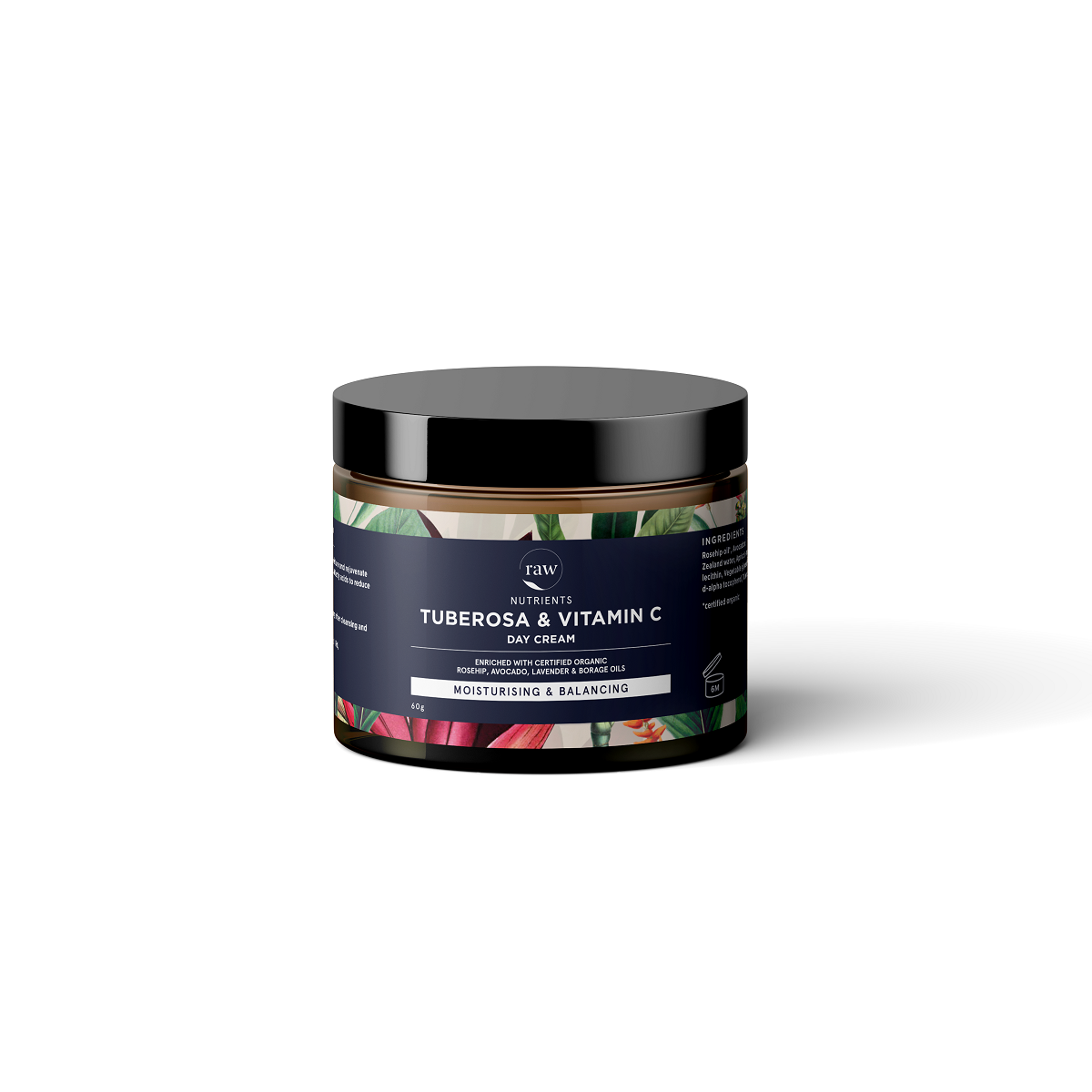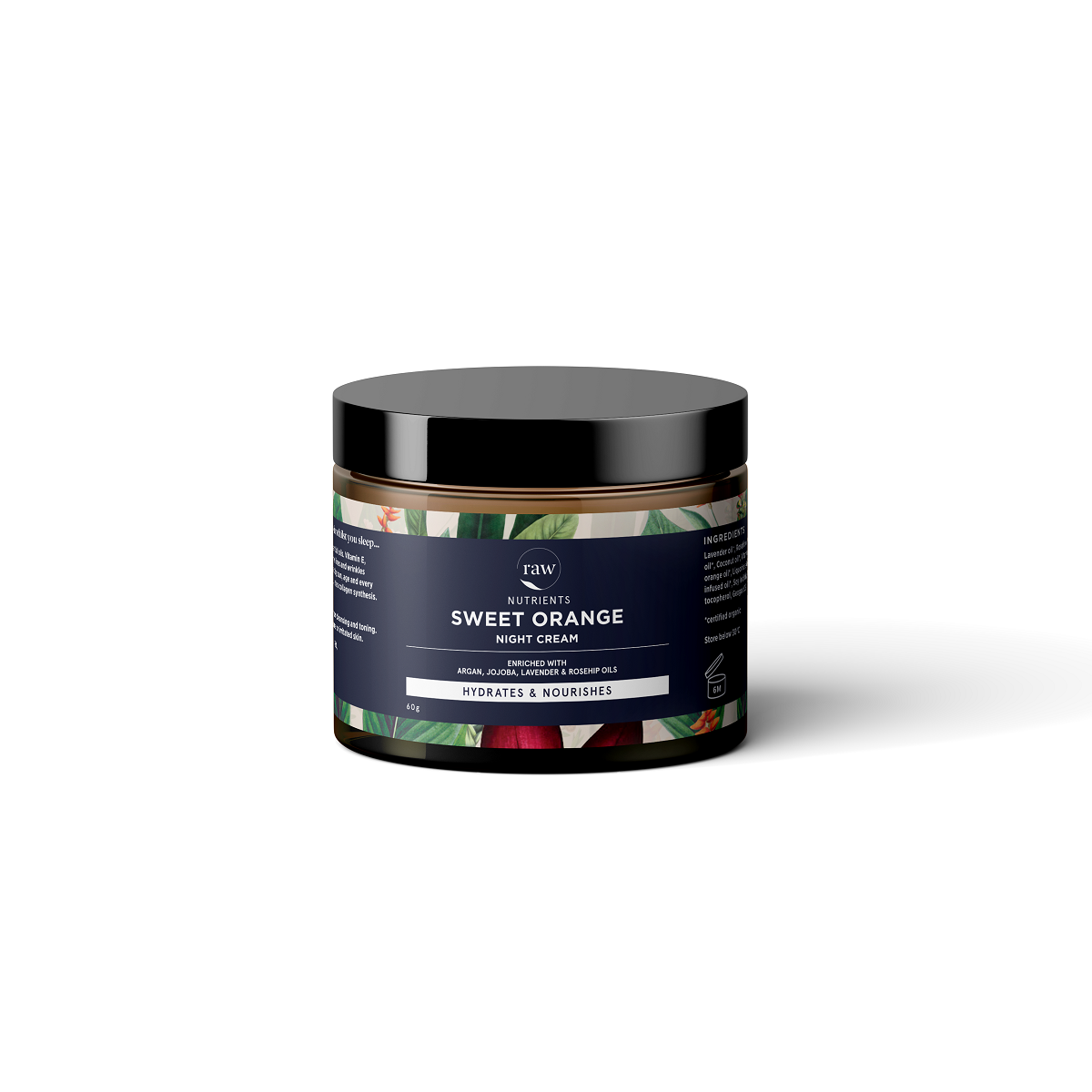-

Think about zinc!
Zinc plays many important roles in your body. This essential dietary mineral is involved in metabolism processes, hel...
-

Magnesium; Are We Consuming Enough?
There is widespread magnesium deficiency, and given the importance of magnesium in the body, it is but essential to r...
-

Probiotics; When & how do they work best?
Your gastrointestinal system comprises different microorganisms. The gut bacteria play a vital role in the health and...
-

Vitamin C; How does it benefit wellness?
Vitamin C has gained popularity as an antioxidant. However, research claims that it can act as both an antioxidant an...

13 reasons you need to step up your fruit consumption
Statistics reveal that less than 10% of the Western population consumes adequate amount of whole fruits and dietary fiber. Given the beneficial prebiotic effects of bioactive fiber, these are highly staggering numbers. A diet with an adequate amount of fruits and vegetables holds the key to good health, preventing a range of age-related diseases. The Dietary Guidelines for Americans 2010 recommends making one-half of your plate full of fruits and vegetables.[1]
A diet rich in fruit and vegetables supplies your body with essential nutrients, dietary fiber, antioxidants and polyphenols. Such diet is shown to help with:
- Lowering bad cholesterol
- Managing weight
- Reducing blood pressure
- Decreasing the risk of cardiovascular and coronary heart disease
- Reducing risks of cancer, type 2 diabetes
- Preventing premature aging
Plant fiber contributes significantly to prebiotic health effects, stimulating the growth of beneficial gut flora and thus promoting a healthy colonic microbiota ecosystem. Whole fruit is believed to contribute fermentable fiber in the body that supports colon prebiotic activity. Sustained consumption of whole fruit can therefore contribute to a range of health benefits.
Pectin
Korean scientists studied the effectiveness of pectin in promoting prebiotic activity. According to a 2018 in vitro study, pectin can play a role in improving the survival of probiotic bacteria in the gut and stomach.
Other studies reveal that fruit fiber, including pectin, has the potential to re-balance the colonic microbiota. It is believed to promote a healthy, anti-inflammatory gut with greater microflora diversity.
Whole Fruits
Several research studies support the prebiotic effects of consuming whole fruits in the gut and stomach. According to a study that evaluated apples found that all varieties of this fruit support beneficial prebiotic activity and improve colonic microbiota bacterial diversity.
Renetta Canada apple variety was particularly found to have positive consequences on health for its fiber and polyphenol content. Research finds that this apple variety increases healthy gut bacteria, butyrate level, and polyphenol. Similarly, raisins were associated with a significant increase in the proportion of Bifidobacteria and Lactobacilli. Fiber and polyphenolic compounds in whole fruits can help promote a healthy microbiome.
Health Benefits of Whole Fruits and Fruit Fiber
Constipation
Low fiber and fluid intake could result in a severe case of constipation. Research finds that pectin increases the population of healthy microflora in the colon while reducing mean constipation score. An increased consumption of whole fruits and vegetables is believed to reduce fecal transit time and increase the number of bowel movements.
Whole fruits comprise fermentable soluble fiber that can relieve constipation symptoms. Since fruits contain mostly sugars and fiber, which are fermented in the large intestine, they are used to treat constipation.[2] Fruit consumption is linked with reduced total constipation score. This means with high fruit intake, you are less likely to experience pain on evacuation with a high frequency of bowel movements.
Several fruits, such as kiwi and prunes, are linked with better laxation, low incidence of constipation, and softened stools. Most fruits comprise highly viscous soluble fiber known for modest fermentability. Research shows that 2 servings of fruit fiber in your everyday diet can promote regularity and thus help prevent constipation.[3]
Irritable bowel syndrome
Flatulence, abdominal pain, and altered bowel motility are often associated with IBS. The gastrointestinal disorder is found to lower microbial diversity and healthy gut bacteria.
Research finds that the consumption of soluble, complex, and slowly fermentable fiber can help control IBS symptoms. Such long-chain butyrate-producing fibers include fruit pectin. Studies suggest including fresh fruit, such as oranges, grapes, blueberries, strawberries, bananas, grapefruits, kiwifruit , avocados, lemons, passion fruit, and raspberries, as an option for IBS management.[4]
A 2–3 hour gap between the serving of each fruit can help avoid loading the stomach and prevent flare-ups. An adequate intake of prebiotic fiber is recommended to improve colonic butyrate levels for better mucosal barrier function and to protect against IBD.
Diverticular disease
A UK Million Women Study claimed that there was a significantly lower risk of diverticular disease per 5 g of fruit fiber. Research finds that although a high-fiber diet may not protect you from colonic diverticulosis, it may help reduce abdominal symptoms of the disease.[5]
Weight control
The consumption of energy dense and fiber deficient diets and a sedentary lifestyle are responsible for the rising number of obesity cases worldwide. The increased obesity prevalence may be blamed on an increased consumption of processed and fiber deficient foods.
A 2015 systematic review of cohort studies suggests that regular fruit consumption might help with a reduction in body weight and waist circumference. Further, this might also help reduce the risk of obese adiposity.
Another research report concludes that whole fruit consumption as a major part of diet may protect against weight gain and obesity. Fiber-rich blueberries, broccoli, pears, apples, string beans, and cauliflower are low energy dense and highly effective in weight loss compared to starchy vegetables, including potatoes, corn, and peas.
Another study concludes that high fruit intake is inversely linked with the risk of obesity and overweight in women.[6]
The Diabetes Prevention Program multicenter RCT concluded that there was a positive association between weight loss and daily consumption of dark green leafy and bright yellow vegetables, besides non-citrus fruits.
A habit of eating fresh fruit in a child’s early years can promote healthful eating behavior later. Whole fruit consumption plays a big role in the delayed absorption of nutrients, which is associated with a feeling of satiety.
High fiber diets help with high loss of fecal energy, particularly unabsorbed fat, than low-fiber diets.
Cardiovascular disease
Cardiovascular ailments are responsible for morbidity and mortality. On the other hand, healthy dietary patterns can help prevent such diseases. A diet rich in fruits, vegetables, nuts, and whole grains is an excellent source of fiber.
Nutrition Facts panel recommends 25 g of dietary fiber in a 2000-calorie diet. Whole fruit fiber is believed to reduce bad cholesterol by lowering the re-absorption of bile acid to attenuate cardiovascular risk.[7]
Hypertension
According to the Women’s Health Study, women with a high intake of fruits reported significant reduction in hypertension risk. Fruit fiber is believed to be inversely associated with BP. A plant-based diet might help in the significant reduction of bad cholesterol and blood pressure.
Studies find that the intake of whole fruits and fruit fiber reduces the risk of hypertension and blood pressure compared with vegetables.[8]
Type 2 diabetes
Research concludes that a higher intake of fruit fiber, especially leafy greens, yellow veggies, berries, and cruciferous vegetables, might help reduce the risk of type 2 diabetes and diabetic retinopathy. [9]
Contrarily, a lower intake of whole fruit is linked with high risk of type 2 because of higher free radical. According to the Nurses’ Health Study, there was 20% lower risk of diabetes in a diet rich in total and fruit fiber as opposed to one with cereal fiber, which has a 30% risk.
Metabolic syndrome
Healthy fiber-rich diets help to attenuate the risk of metabolic syndrome due to high antioxidant, anti-inflammatory vitamins and phytochemicals and high fiber intake. Fruit fiber consumption reduces metabolic syndrome risk by reducing the risk of obesity, systemic inflammation, and insulin resistance and promoting colonic microbiota health.[10]
Cancer
The American Cancer Society recommends a daily serving of 2.5 cups of fruits and vegetables for cancer prevention. Unhealthy dietary habits, such as low intake of fiber, fruits and vegetables and high consumption of meat, can raise the risk of cancer.
Research finds that whole plant foods are rich in fiber and known for promoting healthy colon microbiota. Such healthy bacteria reduce carcinogen production and tumorigenic inflammation. According to Black Women’s Health Study, those who consume high fruits have an insignificant lower lung cancer risk, irrespective of smoking history.
The risk of different types of cancers, including lung, upper gastrointestinal tract, breast, liver, and colorectal, was inversely associated with fruit consumption. This was restricted to smokers. [11]
Higher intake of dietary fiber, especially fruit fiber, is directly associated with lower risk of chronic diseases and mortality. Specific fruits, such as apples, pears, berries, bananas, citrus fruits, are believed to lower odds of all-cause mortality, especially from vascular and non-vascular illness.[12]
Asthma
A 2018 meta-analysis finds an inverse association between higher fruit intake and asthma. High fruit consumption helps increase colonic microbiota SCFAs levels. Research finds that the rise in microbiota suppresses asthma airway restrictions.
Contrarily, low fruit intake may increase microbiota dysbiosis and thus raise the risk of asthma severity. Another meta-analysis concluded that an increase in prebiotic fiber intake may help lower the chances of wheezing and asthma by 63%.
Further, it also concluded that sufficient intake of whole fruits is inversely associated with asthma attacks in children and adult. It is believed that fruit fiber helps in the rise of healthier colonic microbiome, which suppresses the severity of airway inflammatory restrictions.[13]
Bone mineral density
Diets high in prebiotic fiber can improve calcium absorption. Fruit pectin may also help with osteoclast bone resorption. Fiber fermentation in the colon results in the release of bound calcium. According to a Northern Ireland cross-sectional study performed in 2014, teen girls consuming a diet rich in fruit observed significantly better heel bone mineral density than another group with lower fruit intake.[14]
Higher intake of fruits is associated with an improved mineral density for the whole body, including spine and hip and femoral neck bone. Further, it reduces the risk of osteoporotic fracture.
Seborrheic Dermatitis
According to a 2018 Dutch cross-sectional study, a high dependence on the Western diet poses a high risk of seborrheic dermatitis. The skin condition is characterized by scaly, dried patches on the skin. Research finds that an increased fruit intake reduces the risk of seborrheic dermatitis.
Prebiotic fruit fiber intake has a beneficial effect on colonic microbiota dysbiosis, which is associated with lower inflammatory skin disorders and better immune function.[15]
Autism Spectrum Disorder (ASD)
Low consumption of fiber-rich foods by ASD-affected children results in nutritional inadequacy. This eating pattern is associated with a high incidence of gastrointestinal abnormality and microbial dysbiosis. High fruit fiber intake is believed to correct gastrointestinal abnormality while improving microbial health that further helps reduce ASD symptoms.
According to the results of a 2018 intervention trial, dietary supplementation with a prebiotic may help improve social behavior. Besides, it can have a positive impact on gastrointestinal and microbiota health. The trial concluded that fruit fiber may have positive effects on ASD symptoms.[16]
References
[1] Slavin, J. L., & Lloyd, B. (2012). Health benefits of fruits and vegetables. Advances in nutrition (Bethesda, Md.), 3(4), 506–516. https://doi.org/10.3945/an.112.002154
[2] Slavin, J. L., & Lloyd, B. (2012). Health benefits of fruits and vegetables. Advances in nutrition (Bethesda, Md.), 3(4), 506–516. https://doi.org/10.3945/an.112.002154
[3] Bae S. H. (2014). Diets for constipation. Pediatric gastroenterology, hepatology & nutrition, 17(4), 203–208. https://doi.org/10.5223/pghn.2014.17.4.203
[4] Chan, A. O., et.al. (2007). Increasing dietary fiber intake in terms of kiwifruit improves constipation in Chinese patients. World journal of gastroenterology, 13(35), 4771–4775. https://doi.org/10.3748/wjg.v13.i35.4771
[5] Carabotti, M., et.al. (2017). Role of Fiber in Symptomatic Uncomplicated Diverticular Disease: A Systematic Review. Nutrients, 9(2), 161. https://doi.org/10.3390/nu9020161
[6] Hadrévi, J., Søgaard, K., & Christensen, J. R. (2017). Dietary Fiber Intake among Normal-Weight and Overweight Female Health Care Workers: An Exploratory Nested Case-Control Study within FINALE-Health. Journal of nutrition and metabolism, 2017, 1096015. https://doi.org/10.1155/2017/1096015
[7] Soliman G. A. (2019). Dietary Fiber, Atherosclerosis, and Cardiovascular Disease. Nutrients, 11(5), 1155. https://doi.org/10.3390/nu11051155
[8] Soliman G. A. (2019). Dietary Fiber, Atherosclerosis, and Cardiovascular Disease. Nutrients, 11(5), 1155. https://doi.org/10.3390/nu11051155
[9] Wang P.Y.1. (2016). Higher intake of fruits, vegetables or their fiber reduces the risk of type 2 diabetes: A meta-analysis.Journal of Diabetes Investigation. doi: 10.1111/jdi.12376. Epub 2015 Jun 22
[10] Chen, J. P., Chen, G. C., Wang, X. P., Qin, L., & Bai, Y. (2017). Dietary Fiber and Metabolic Syndrome: A Meta-Analysis and Review of Related Mechanisms. Nutrients, 10(1), 24. https://doi.org/10.3390/nu10010024
[11] Bradbury KE1, Appleby PN1, Key TJ1.( 2014). Fruit, vegetable, and fiber intake in relation to cancer risk: findings from the European Prospective Investigation into Cancer and Nutrition (EPIC).The American Journal of Clinical Nutrition. doi: 10.3945/ajcn.113.071357
[12] Du, H., et.al. China Kadoorie Biobank study (2017). Fresh fruit consumption and all-cause and cause-specific mortality: findings from the China Kadoorie Biobank. International journal of epidemiology, 46(5), 1444–1455. https://doi.org/10.1093/ije/dyx042
[13] Hosseini, B., et.al. (2017). Effects of Fruit and Vegetable Consumption on Risk of Asthma, Wheezing and Immune Responses: A Systematic Review and Meta-Analysis. Nutrients, 9(4), 341. https://doi.org/10.3390/nu9040341
[14] McGartland, C.P., et.al. (2004). Fruit and vegetable consumption and bone mineral density: the Northern Ireland Young Hearts Project. The American Journal of Clinical Nutrition. DOI: 10.1093/ajcn/80.4.1019
[15] Pascal, M.et.al. (2018). Microbiome and Allergic Diseases. Front Immunology.9():1584
[16] Sanctuary, M. R., et.al. (2018). Dietary Considerations in Autism Spectrum Disorders: The Potential Role of Protein Digestion and Microbial Putrefaction in the Gut-Brain Axis. Frontiers in nutrition, 5, 40. https://doi.org/10.3389/fnut.2018.00040
You might be interested in...
Raw Resources
Read About the Science Behind the Supplements







